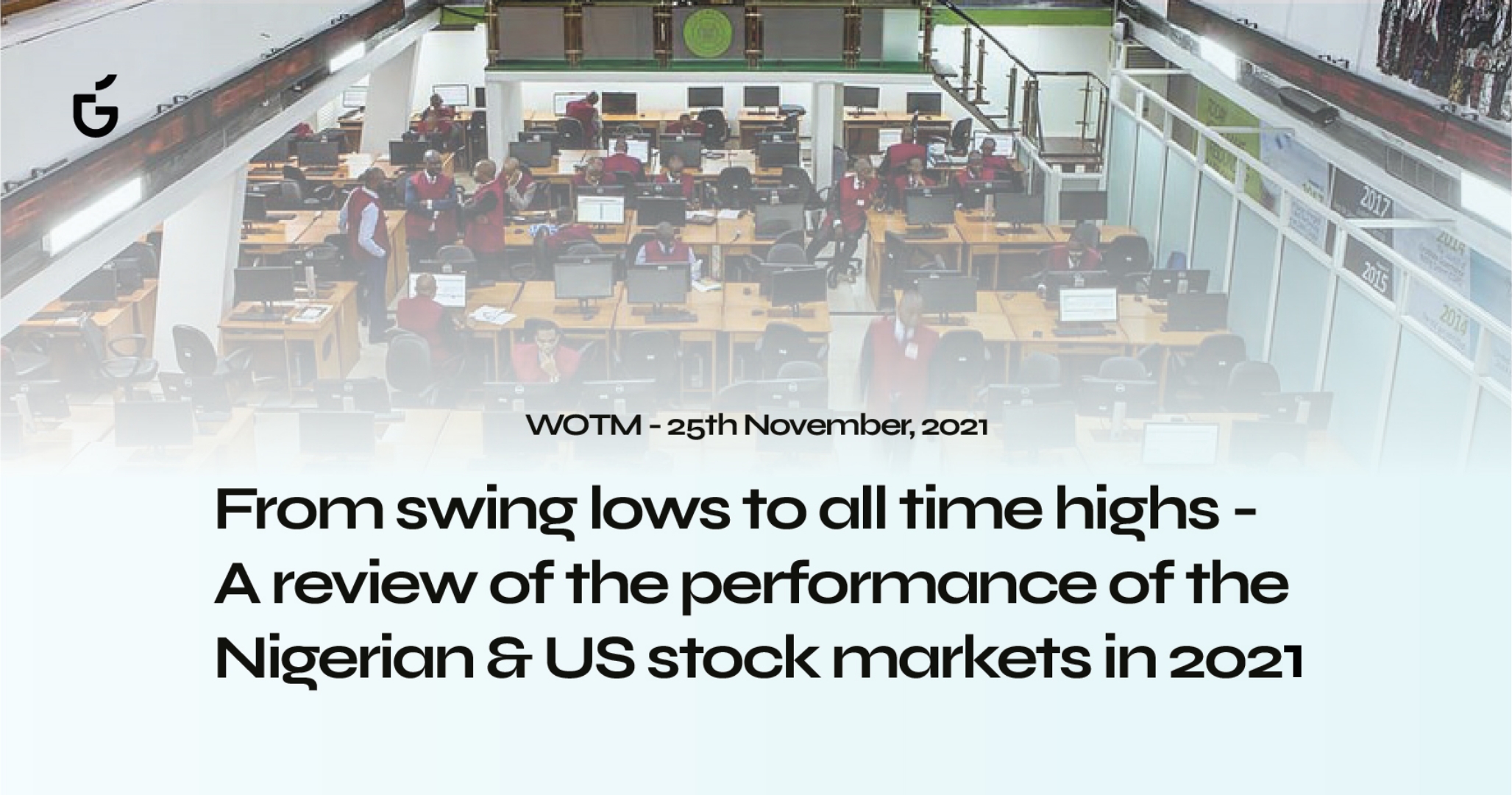 Africa
AfricaUnderstanding how companies are valued – A look into the MainOne acquisition
15 December, 2021
20 October, 2021 | 4 MINS READ
The Story
Andela, after raising $200 million in September 2021 became the 5th Nigerian start-up to become a Unicorn (companies valued at above $1billion). The company which is now valued at $1.5billion specializes in helping companies build remote engineering teams by providing them with software engineers.
Flutterwave Inc. one of the already existing unicorns is again seeking funding at a valuation of $3bn. This is triple its last valuation of $1bn.
What Exactly is Valuation?
Valuation is the process of determining the real worth of an asset (stocks, bonds, businesses, real estate etc.). Some say it is the derivation of the intrinsic value of an asset. The intrinsic value of an asset is what anyone having all possible information about an asset is willing to pay for it.
To value a business, a number of things are put into consideration including the company’s management, the company’s ability to generate future cash flow & its capital structure (i.e., how much equity or debt is used in funding the company’s operations).
Does a Company’s Valuation say anything about its Profitability?
In deciding on whether or not the valuation of a company is a reflection of its profitability, one needs to understand the type of company being valued and the method of valuation used. For already existing businesses that have been able to generate consistent revenue or cash flow, valuation methods such as earnings multiplier and discounted cash flow method reflects the company’s ability to continue as a going concern. And so, such company’s valuation will be reflective of its profitability. But for startups with no revenue or cash flow, the story is different.
Start-ups are valued differently from already existing businesses. Because there are no sales or profit, start-ups are valued using valuation methods like the cost to duplicate and stage valuation which has no need of company revenue or profit to determine the value of the company. So, for start-ups valuation is not reflective of the company’s profit or its ability to generate future profit. In fact, valuation for start-ups is said to be more of art than science.
Reality Vs Perception, How Profitable is Existing Unicorns?
Research done by Dr Jefrey Lee Funk, a technology economics thought leader, showed that out of 73 unicorns profiled, only 6 were profitable in 2019. A deeper look at the numbers reveals that 21 of the 73 unicorns had losses greater than 50% of their revenue, while 13 others including Lyft, Uber, Pinterest, and Snapchat had losses greater than 30% of generated revenue.
According to Dr Jefrey, the numbers suggest that privately-held unicorns, the ones that are yet to do IPOs are mostly unprofitable indicating the record low profitability of start-ups is likely to get worst.
Analysis of Unicorn profitability by country shows that none of the Indian, South Korean, or Singaporean unicorns is profitable. 60% of China’s unicorns and 90% of unicorns in the U.S. are unprofitable. Most unicorns in a bid to ramp up market share operate under negative gross margins. They sell their products at prices lower than the cost of customer acquisition with the hope that this will help beat the competition and eventually cut down marginal costs.
A look at the numbers for Nigerian start-ups show the statistics aren’t really different, Data from getlatka.com (a website that tracks top SaaS companies) shows that Flutterwave and Paystack both have revenue run rate (estimated revenue) of $30.2m & $3.3m respectively for 2021 and both have broken even in terms of cashflow.
Andela as of 2019 projected that revenue will surpass $50million and in the words of the company’s CEO Jeremy Johnson “It’s the first time we’ve ever confirmed anything on revenue” also acknowledging the business is yet to make a profit since its inception in 2014.
Kuda Bank was recently valued at $500million after raising $55million in a Series B round. This valuation raised questions about how companies are valued. Data shows that Kuda bank has been able to grow its users from 300,000 in November 2020 to 1.4 million registered users in August 2021. But do its increased users translate to profit? What is the cost of customer acquisition relative to profit generated per customer? These are questions that are yet to be answered.
How Then Do Investors/Venture Capitalists Profit from their Investment in Start-Ups?
If these start-ups are not yet profitable how then do investors, make money from investing in them? There are a number of ways investors profit from their investment in start-ups. Some of them are:
Initial Public Offers (IPOs) – One of the ways investors profit from their investment in start-ups is through IPOs. IPOs as the name implies is when a private company decides to go public by listing on the stock market. This gives existing investors in the business the opportunity to sell their shareholdings in the company and exit their positions. Investors profit from this, as the price the companies are valued at the IPO, is usually higher than the value of the company when they invested at the early stage.
A notable example is Susa Venture, a venture capital company that invested $250,000 in Robinhood in 2013. Their investment in Robinhood 8 years later is now worth $400 million after the company’s listing on Nasdaq.
Another notable example is Union Square Ventures investment in Coinbase back in 2013. Union Square invested $5million in Coinbase at 20 cents a share. After Coinbase was listed in April 2021, Union Square’s investment in the company was valued at $4.6billion. It can choose to exit at any time as the shares are now traded on the stock exchange.
Acquisitions: For private companies that are not listed on the exchange, an acquisition gives early-stage investors the opportunity to exit at a profit. This we saw happen when Helios acquired the majority stake of Interswitch and when Stripe acquired Paystack. Some investors in Interswitch exited their position with as high as 1400% return on investment. These investors positioned in Interswitch in 2002 and exited at the tail end of 2010.
Secondary Sale: This is a type of exit in which early-stage investors in a company sell their shareholdings in the company to a third-party purchaser. This is different from acquisition and an IPO as the proceeds of the secondary sale are used to pay off existing shareholders and not for expanding the business. They are sometimes called a liquidity round.
An example of a secondary sale is how early-stage investors in Kuda Bank (SM River) exited their position in the bank.
These examples make it obvious that venture capital investing & early-stage investment in start-ups is a long-term game. It took 8 years for investors in companies like Robinhood & Coinbase to exit. Same for investors in Interswitch. It is also important to note that even if the company is valued as a Unicorn there may be no opportunity for early-stage investors to exit their position as is the case with Flutterwave.
According to Kola Aina, founding partner at Ventures Platform (a Pan-African early-stage fund) investors who are willing to hold assets for a period of 5 to 10 years should consider venture capital investing.
 Africa
Africa15 December, 2021
 Africa
Africa09 December, 2021
Join the biggest
investment club in Nigeria.